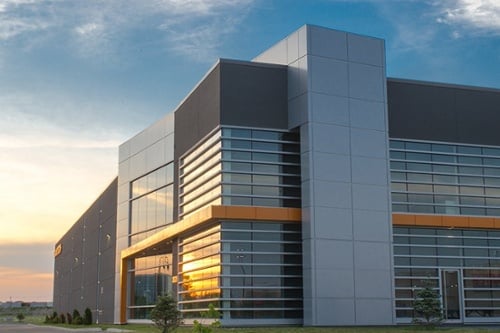Have you ever found yourself captivated by IKEA, imagining the ideal home setup, and maybe spending more than planned to recreate the beauty you see in the aisles in your own living spaces?
As one of the world’s largest retailers, the Swedish giant has not only redefined home furnishing but has also set a standard that few can match regarding warehousing and distribution strategies. Join us as we uncover the secrets behind IKEA’s innovative strategies, integral to its success in delivering quality products to customers worldwide.
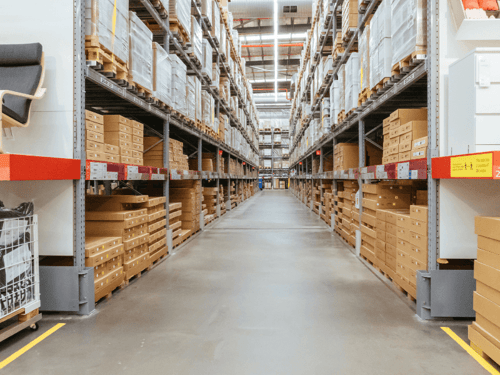
The IKEA Retail Phenomenon and its Warehousing Strategies
IKEA is celebrated for its focus on efficiency, sustainability, and innovation, with warehousing playing a pivotal role. Key aspects of IKEA’s warehousing success include:
IKEA’s Optimized Warehouse Design and Layout
IKEA’s warehousing strategy focuses on its efficient warehouse layout, which is strategically designed to maximize space and minimize wasted storage. They use tall, narrow aisles and high-density storage systems to maximize storage efficiency, whether in traditional or automated warehouses. This layout allows more items to be stored in a smaller space, making it easy for employees to access them.
Also, IKEA strategically positions its warehouses to serve specific regions optimally. Using a hub-and-spoke model, IKEA has distribution centers as hubs and smaller regional warehouses as spokes. This structure helps the company improve transportation and inventory management, ensuring products reach stores quickly.

IKEA’s Automated Regional Distribution Centers
IKEA’s modern warehousing operations are all about automation. The company invested substantially in technology to enhance efficiency through automated warehouses.
IKEA uses Automated Storage and Retrieval Systems (AS/RS) to move products around without needing people to do it manually. Robots and conveyors do the heavy lifting, making the process faster and less prone to mistakes. Automation not only makes better use of storage space but also improves the accuracy of orders, making customers happier.
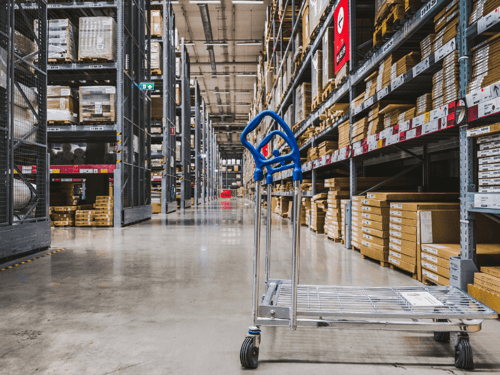
Flat-Pack Packaging: IKEA Space-Saving Warehousing Solution
IKEA’s unique flat-packaging strategy boosts its distribution warehousing efficiency. The furniture is designed to be easily disassembled and packed flat, saving space in the warehouse. This compact design allows more items to be stored and shipped in a single shipment, reducing shipping costs, environmental impact, and the need for large warehousing space.
IKEA’s Cross-Docking Strategies for Streamlined Supply Chain
To accelerate the flow of goods through its supply chain, IKEA uses cross-docking. It involves unloading goods from incoming shipments and immediately loading them onto outgoing trucks with little to no storage time in between. By keeping inventory time short, IKEA delivers orders faster, cuts lead times, and enhances the overall supply chain efficiency.
Just-In-Time Inventory Management in IKEA Distribution Centers
IKEA is known for its “just-in-time” approach. This way, they save money on warehousing because products aren't stored for too long. It also reduces the chances of having unsold items, helping IKEA stay efficient and adapt quickly to market trends.
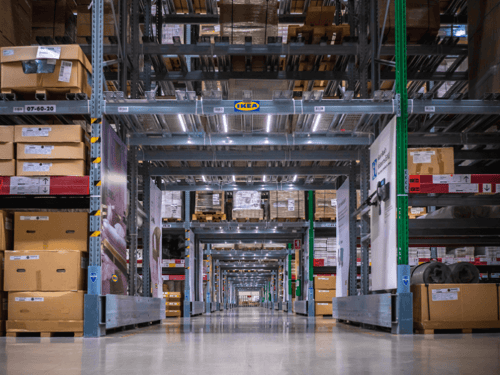
IKEA’s Warehouse Inventory Tracking and Management Tools
IKEA uses smart software to keep track of how much stuff is in all its warehouses. It helps the company be super efficient, avoid mistakes, and streamline its warehousing processes. The software is a powerful tool, making sure everything runs smoothly and customers are happy. By carefully monitoring stock levels and quickly identifying discrepancies, IKEA can use resources wisely, be more efficient, and reduce waste.
IKEA’s Supply Chain Collaboration with Suppliers
IKEA’s success in managing warehouses is greatly influenced by its strong partnership with suppliers. Instead of just viewing them as transactional partners, IKEA sees them as crucial collaborators. The company works closely with suppliers to plan production schedules and optimize shipping schedules to match its warehousing and distribution needs.
This teamwork ensures a smooth flow of goods, minimizing delays and keeping inventory levels optimized. This cooperative approach reflects IKEA’s commitment to efficiency and maintaining a well-coordinated supply chain. It strengthens ties with suppliers and establishes IKEA as a reliable and forward-thinking partner in the industry.
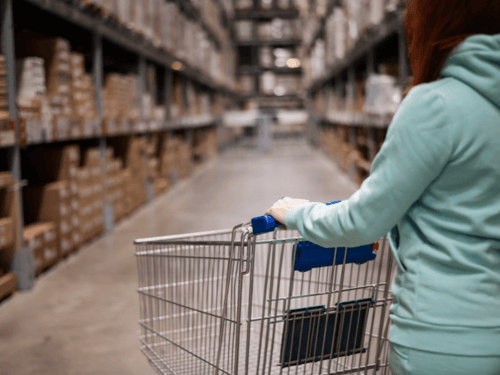
Sustainability and Environmental Considerations in IKEA Warehouses
IKEA places a strong emphasis on being eco-friendly and sustainable, even in the warehouses. IKEA warehouses use energy-saving lights, recycling programs, and sustainable methods. It reduces costs, aligns with what today’s shoppers like, and helps build a green image.
Safety Culture at IKEA Warehouses and Distribution Centers
IKEA, like many big retailers with large warehouses, prioritizes safety, including rack safety, within its warehouses.
Safety is a key aspect of IKEA’s operations, alongside its focus on sustainability and efficiency. Here are some safety measures IKEA typically follows in the warehouses:
- Employee Training: IKEA invests in comprehensive employee training programs, ensuring safety is a core aspect of their responsibilities. It includes proper rack usage, loading procedures, and safety protocols.
- Safety Protocols: Strict safety protocols are in place to mitigate risks and prevent accidents. Emphasis is always on the importance of safety, ensuring the safe handling and storage of products in the warehouse.
- Safety Equipment: IKEA provides essential safety equipment, such as guardrails, safety netting, and rack protection, to ensure a secure working environment.
- Employee Involvement: IKEA encourages employees to actively contribute to enhancing safety and taking ownership of their work environment. This empowerment fosters a culture of responsibility and safety awareness.
IKEA's Commitment to High Safety Standards
It’s important to highlight that IKEA’s commitment to safety aligns with the industry’s best practices for warehouse safety. Measures are taken to prevent accidents, protect employees, and maintain the structural integrity of the racking systems. While specific practices may vary by location, safety is a top priority for IKEA warehouses to ensure the well-being of their employees and the efficiency of their operations.
Lessons Learned from IKEA’s Warehousing Expertise
In summary, IKEA’s warehouse methods serve as a successful model for efficiency, sustainability, and innovation in today’s retail world. Through innovative warehouse design, technology use, and effective inventory management, IKEA remains a leader in the furniture industry. The company’s ongoing advancements in warehousing and supply chain strategies set an example for businesses looking to improve their storage and distribution processes.
IKEA’s approach, featuring optimized warehouse layouts, just-in-time inventory, flat-pack designs, automation, and a focus on sustainability and warehouse safety, sets a benchmark for the industry. While not every company can match IKEA’s scale, valuable lessons can be learned from these warehousing practices. As customers worldwide continue to turn to IKEA warehouses for furnishings, the company’s warehousing excellence remains a crucial aspect of its sustained success.
If your company is looking to enhance its warehouse safety, consider seeking professional rack safety assistance. Visit Damotech’s DAMO CARE Rack Safety Program to learn more.

